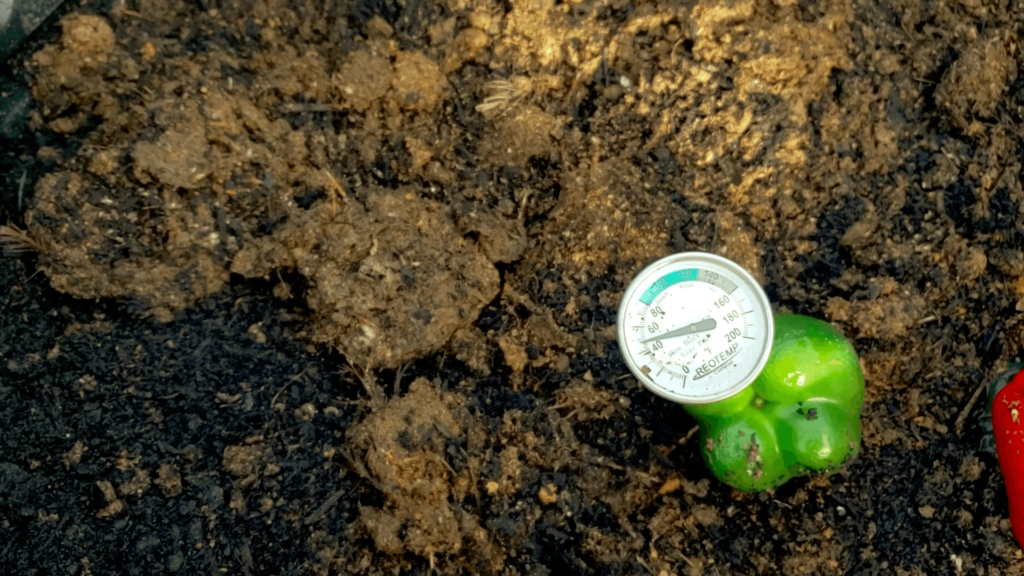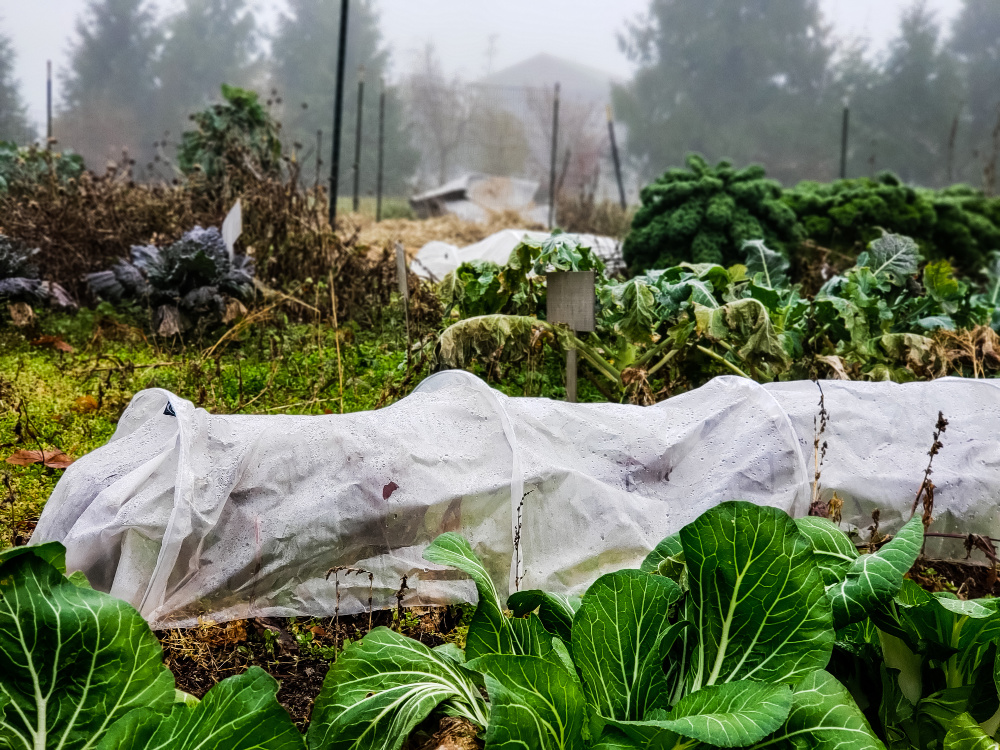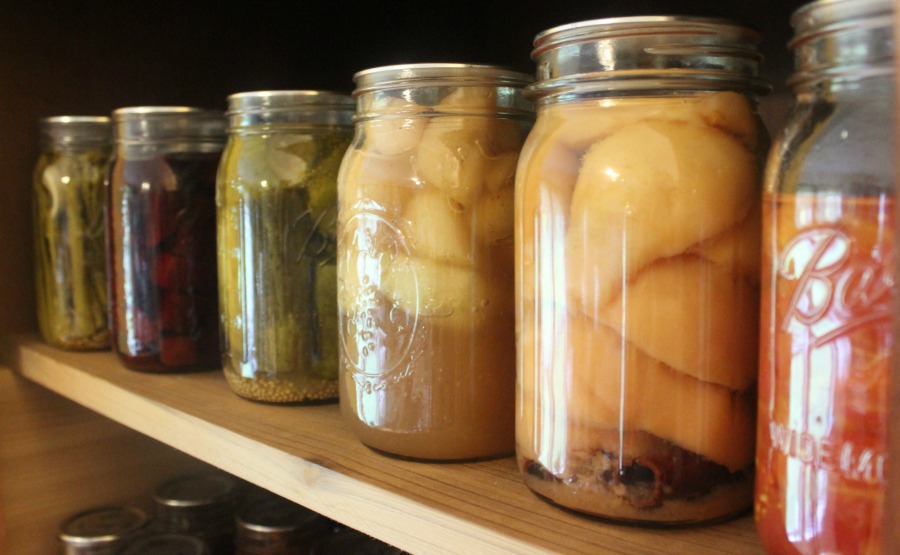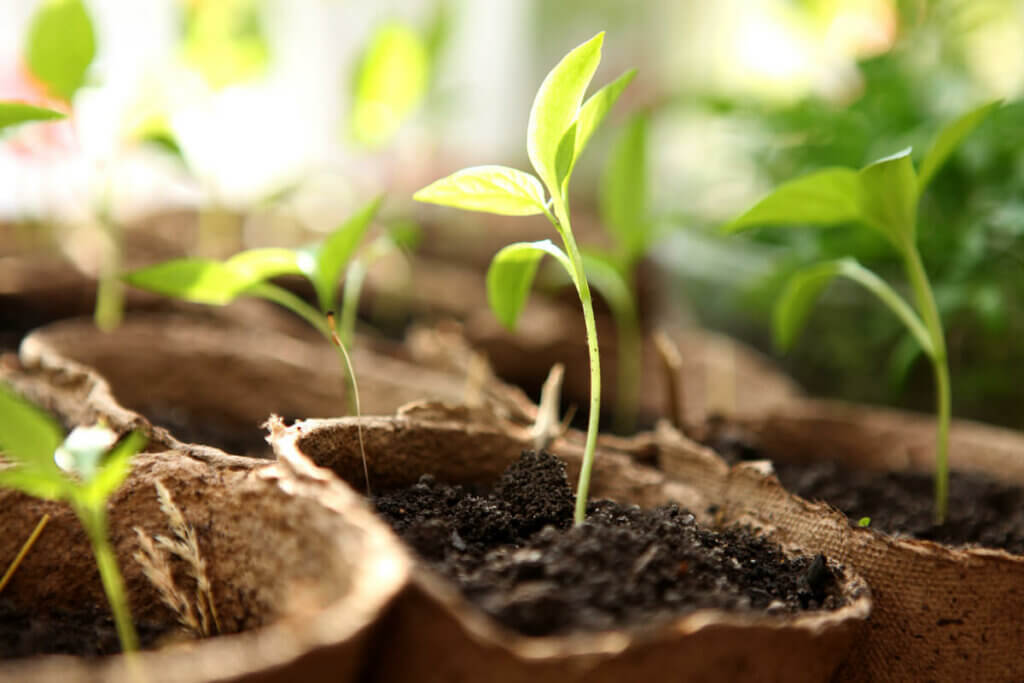Today’s episode is all about gardening. I’m sharing the best beginner gardening secrets every home gardener should know, plusst I’m answering listener questions based on my decades of experience in gardening.

I can’t believe we’re actually on episode #300 of the Pioneering Today Podcast! If you’ve missed any of my previous episodes, or you want to search by topic, just click the podcast tab at the top of the page, or use the search bar for any specific questions.
If you’re brand new to gardening, be sure to check out my post (and video) on the 13 basic steps to getting started with backyard gardening, as well as time-saving tips for new gardens.
Table of Contents[Hide][Show]
In This Episode:
I’m answering your questions about:
- Soaking seeds before planting.
- The importance of soil temperature when planting.
- The difference between high-tunnels, tunnels, row frames, cold frames, and cloches.
- How to plan for and grow an organized garden.
- How to grow a garden that will fill your pantry all year.
- What causes leggy starts.

Soaking Seeds Before Planting
The question I was asked is, “How do you feel about soaking seeds before planting them? Will this help germination for all the seeds?”
Which Seeds Can You Soak First?
I only soak larger seeds and/or seeds that have a harder coating on the outside.
For example, beet seeds, which have several seeds encapsulated inside what we actually see as one seed. Because they have such a hard coating, I prefer to soak the seeds to soften them up, allowing them to germinate faster.
I have also soaked corn and bean seeds, but that’s about the extent of it.
Be sure to check out my ultimate seed starting guide. It’s filled with so many tips for a successful start the very first time. You may also like my tips in this post on the best way to germinate seeds.
Growing Conditions & Weather
You’ll want to pay attention to the growing conditions and the weather. If your soil is wet enough, then there is enough moisture that you shouldn’t need to soak your seeds for proper germination.
If you struggle with damp soil that doesn’t drain well, soaking seeds may not be beneficial as they could rot.
If your soil is very well-draining, soaking seeds first is a great idea because you won’t need to worry about them possibly drying out before germination.
Paying attention to the weather is important when planning to soak seeds. If a lot of rain is forecasted around the time you want to plant, you may want to skip the soaking step as your seeds could rot from too much water.
I’ve talked more about this in my seasonal monthly planting guide as well as my succession planting guide.
Short Growing Season
If you have a short growing season, soaking the seeds can speed up the germination process, giving you up to 4 or more days of growing time.
It’s not always easy, or predictable, but try to know your weather, know your soil, and then make your decisions.

Soil Temperature when Planting
A listener wrote in and said, “April 9th is our average last frost date, should I wait an extra week before I plant? I don’t have a ground thermometer so I don’t know what the soil temperature is and we’re just coming off a two-day cold snap.”
Typically speaking, the soil temperature is going to be a few degrees different than the air temperature around it (either warmer or cooler, depending on the time of year).
However, if you’ve recently had a hard frost, or if you’re not past your average last frost date, then you’ll want to wait a couple of weeks for the ground temperature to finally be above freezing before planting certain crops.
Remember, the surface of the soil may be about air temperature, but beneath the surface a couple inches (which is where your plants roots are going to grow down to) could still be too cold for the plant.
There’s no harm in waiting about two weeks after your last average frost date before planting warm weather loving plants. By allowing the soil to warm up just a bit, these plants will actually grow a bit faster than if you planted them out when the soil is too cold to promote healthy growth.
If you’re waiting around for the soil to warm up, there’s no reason you can’t be doing everything you can to improve your soil so it’s ready for your crops. Here are my tips on the best way to improve your soil for gardening, and how to improve your soil with sheet mulching (this is a great practice to follow in the late fall).

Tunnels, Row Frames, Cloches & Cold Frames
I’m frequently asked, “What is the difference between tunnels, cold frames, coaches and row frames and when, why and how do you use them?“
This is a great question as many different gardeners will use different terminology, and even exchange terms when there are slight differences. Here’s the simple breakdown (for more detailed information check out my post on plant covers for cold weather gardening – how to grow vegetables all year, and how to grow food using covers (Hot & Cold Weather).
Cold Frame
A cold frame is where you have a frame, usually built upon wood, where the crops are growing inside of it during the colder months. Usually you can open and close the frame on a hinge to allow the warmth of the day, but close it up when it’s still getting too cold at night. These frames can usually be removed during the summer months when they’re not needed, and only utilizing them in the early spring and late fall through the winter.
Cloche
A cloche is typically made of glass, but you could use something like a clear plastic container, but it’s an individual container that you put over a plant that sits on the ground to act as a tiny greenhouse. They are typically used for seedlings and will protect them at night from a frost or cooler weather.
High-Tunnel
High tunnels are basically an unheated greenhouse. However, unlike a greenhouse, a high-tunnel has no heater. In the winter months it will provide temperatures about 5-10 degrees warmer than the air outside the tunnel. In the summer I also grow my peppers and tomatoes in my high tunnel so they don’t get any overhead rain on them to avoid blight. The tunnel will also increase the temperature in early summer to allow my warmer weather crops a longer growing season.
Tunnel
Tunnels can be much smaller than the average high-tunnel. Some people take hog panels and create a hoop with them either over their garden rows (secured with rebar or ground stakes) or in a raised bed. These can then be used as a trellis for climbing plants, or wrapped in greenhouse plastic to allow the planting of crops earlier or later in the season. Regular tunnels are typically much smaller and wouldn’t actually allow you to walk through them, however you could grow a full-sized tomato plant inside the tunnel. The size will vary based on your needs.
Row Cover
Row Covers can be made with different material, but they’re typically long and narrow and only a couple of feet off the ground. Depending on the purpose of the row cover, the material will be different.
- Greenhouse plastic: If you’re needing it for heat, it will typically be made of greenhouse plastic. They tend to only provide a 5-10 degree temperature buffer, so plan accordingly and don’t let your crops get too cold. These greenhouse plastic row covers tend to be used when small seedlings are transplanted into the ground, or to get cooler crops into the ground faster. You do need to be careful with these as they can get very hot on sunny days and there’s the possibility of “cooking” your plants.
- Fleece fabric: There are also materials like fleece fabric that will allow some protection from the frost, but it also won’t get as warm during the ground. The fleece also allows rain to seep through and water the plants, plus these don’t heat up as much during the day.
- Mesh Fabric: Mesh fabrics are used to keep pests away from crops. These are simply used to keep bugs away from pest-prone crops. Sometimes people also use these mesh row covers as shade in really warm areas.
If you’re a Pioneering Today member, we have an entire section that covers cold frames, cloches, building instructions, terminology and ways to use them all.

Growing an Organized Vegetable Garden
A listener said, “We’ve always had a garden, but never really been intentional with it. How do I get started without feeling so overwhelmed?“
This exact question excites me and is why I wrote The Family Garden Plan (and subsequently The Family Garden Planner). In my books, you can walk through how to plan out your family’s specific garden needs (rather than following the plan for someone else’s needs).
This book is filled with worksheets and questions about what your family likes to eat, what your climate is, and what foods you can grow and preserve on your own.
You can grab a copy of my book here, or if you’d like, I’ll give you a free download with a planning guide and free charts for how much to plant per person.

What to Grow to Fill Your Pantry?
One of you wondered, “What types of crops make the most sense to grow when you’re thinking about filling up a food pantry?”
Fabulous question and a great thing to consider before just tossing some seeds into the garden.
One of the things I think about when planning my garden is how easy the food is to preserve. There are 9 ways to preserve food at home and if something isn’t easy to preserve, then I might not grow it at all, or I might not give it a very large amount of space in my garden.
I like to look at my staple crops and think about all the ways I can preserve that crop to use throughout the year.
I grow tomatoes in the garden, for example, to preserve enough for a year of homemade tomato sauce and canned tomatoes. The tomato sauce is then transformed throughout the year into pizza sauce, marinara sauce, tomato soup, condensed tomato soup, etc. So from one crop, I’m actually getting quite a few different uses and meals.
Fresh tomatoes also happen to be one of the more expensive produce items to buy at the store. So if I wanted to buy tomatoes and then can them I would be spending a whole lot more money than growing them and canning the products myself.
Check out these 10 tomato growing tips for a disease-free harvest, how to prune tomatoes for a better harvest, and you can also get this free guide on everything you need to know to raise a year’s worth of tomatoes for your family.
The other crops I grow that feed us for a year are green beans, pickling cucumbers, winter squash and summer squash, corn, and potatoes (early spring and early summer crops).
Then, with whatever space I have leftover in the garden I’ll fill it in with the other crops that I like to eat fresh, but that I’m not growing a huge amount for preservation. These are things like lettuce, kale, chard, radishes, etc.
I’m also excited to experiment with growing food forests, companion planting for better nutrients in the soil, as well as my beloved companion planting for bug control.

Leggy Starts
Sometimes, when we’re starting plants or herbs indoors, they can become leggy. I was asked, “What do I do with leggy herb starts?”
If your starts are leggy, that most often means your plants aren’t getting enough light. Occasionally plants will get leggy if they’re competing for space (meaning you started a lot of seeds in a small container) and they’re growing leggy in order to reach the light, even if there is adequate light.
For most climates, a southern-facing window does not provide enough light for your seedlings. I have found I always need to use a full-spectrum grow light that’s on for at least 16 hours per day (this is equivalent to about 8 hours of direct sunlight per day).
So, if your plants are leggy, make sure your lights are on for long enough during the day, if they’re still leggy, your grow light might be too far away from your plants. Ideally, your lights should only be 2-3 inches above your plants.
For more troubleshooting tips on starting seeds indoors, check out these common seed starting problems and how to fix them.
Verse of the Week: Luke 9: 25-26
More Gardening Articles
- Debunking Common Garden Myths
- Sheet Mulching the Easy Way
- Hugelkultur Garden Beds (What, Why & How)
- Fall Gardening Tasks for a Better Garden Next Spring
- Wood Chips for Garden Mulch – Beneficial or Not?
- 13 Basic Steps to Starting a Vegetable Garden
- How to Create a Garden Plan for More Harvest & Less Stress
- Planning a Fall Garden (28 Crops to Plant in August)
[fusebox_transcript]


